
The post was originally published here.
Highlights:
- Digital expansion bears fruit, driving top-line growth
- Reengineering retail business could enhance margin further
- Competitive position means profits beat those of biggest rival
Q1 2022 hedge fund letters, conferences and more

Download the full report as a PDF
Nike’s revenue breakdown 2021

Price turned bearish

- The share price has shown strong volatility over the past few months
- Most recently, the 50 DMA has fallen below the 200 DMA, which could be the start of a bearish trend
- Volume RSI is still slightly above the 50%-line, but not providing a clear signal yet
Digital expansion bears fruit, driving top-line growth

- Digital sales already make up around 25% of Nike’s revenue in 2021 compared to 5% in 2014
- Compared to its competitors, Nike already expanded early in its digital channels, which delivered high growth
- Especially during the pandemic, its early efforts paid off big
- The new normal could continue to push digital sales further up
Digital penetration is part of its strategy shift
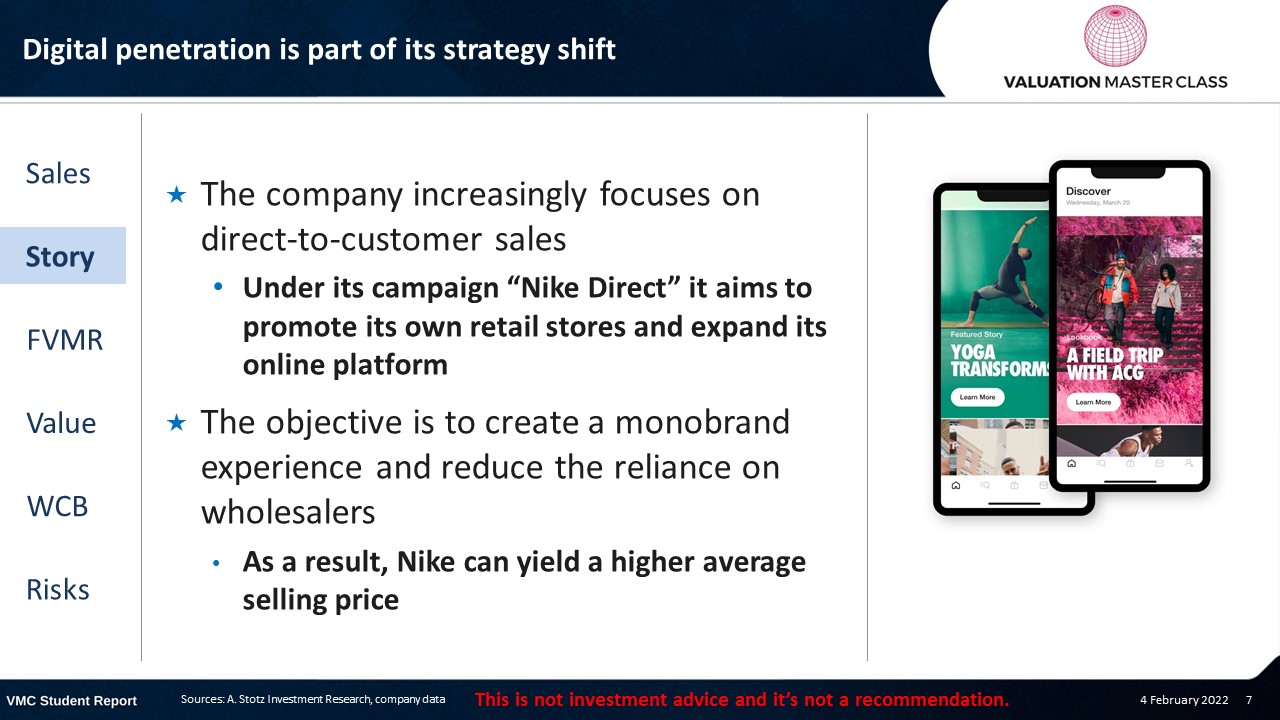
- The company increasingly focuses on direct-to-customer sales
- Under its campaign “Nike Direct” it aims to promote its own retail stores and expand its online platform
- The objective is to create a monobrand experience and reduce the reliance on wholesalers
- As a result, Nike can yield a higher average selling price
How I incorporated the story into my forecast
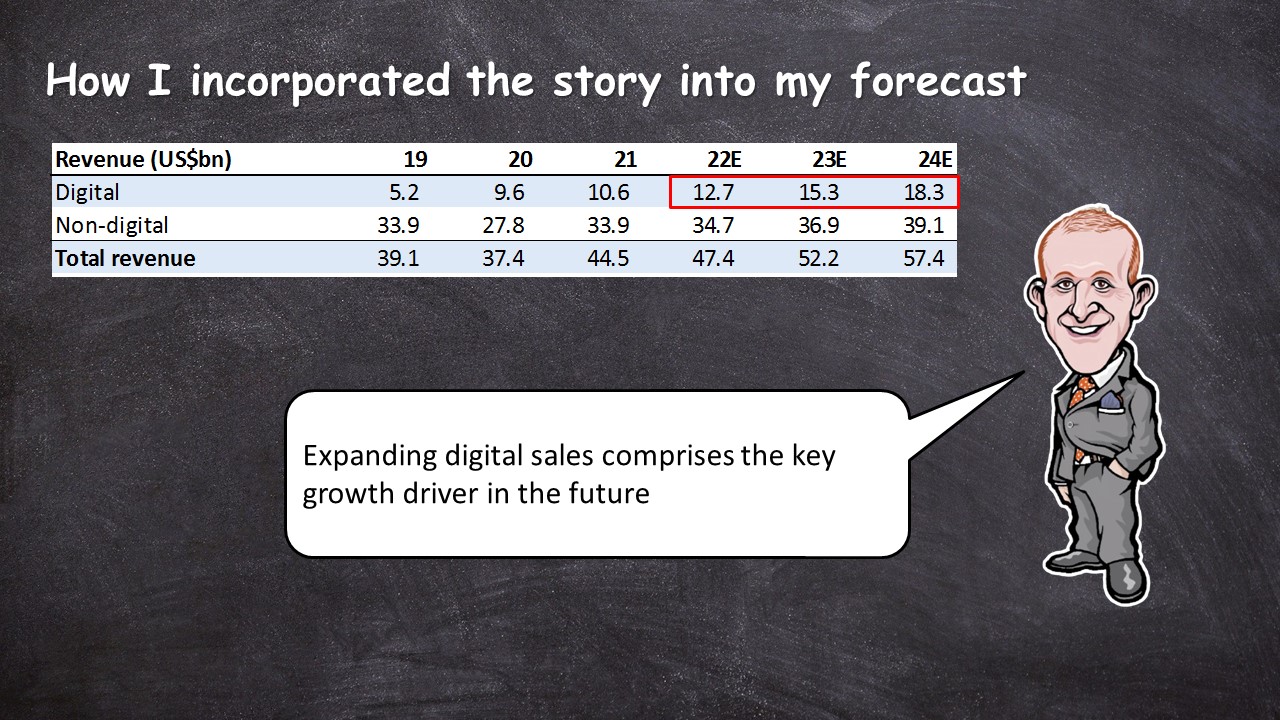
- Expanding digital sales comprises the key growth driver in the future
Reengineering retail business could enhance margin further

- In 2021, Nike’s direct sales make up 35% of total revenue compared to 26% in 2017
- By 25E, the company aims to ramp up the contribution of direct sales to 50%, cutting out wholesalers
- Wholesale partners tend to offer large discounts when reselling, devaluing the brand
- The shift also enables Nike to regain price control of its products
Cutting out the middleman should result in margin expansion

- Focusing on direct sales could enhance Nike’s gross margin by 2ppts over the near-term future, with further potential over the long run
- In my opinion, this strategy makes sense as the company, unlike in its initial growth stage, is no further dependent on wholesalers to raise brand awareness
How I incorporated the story into my forecast

- Scarcity creates demand; Nike continues to reduce its own retail stores making their products more desirable
- The increasing management’s efforts to shift to direct sales should be rewarded with a significant gross margin expansion
Competitive position means profits beat those of biggest rival
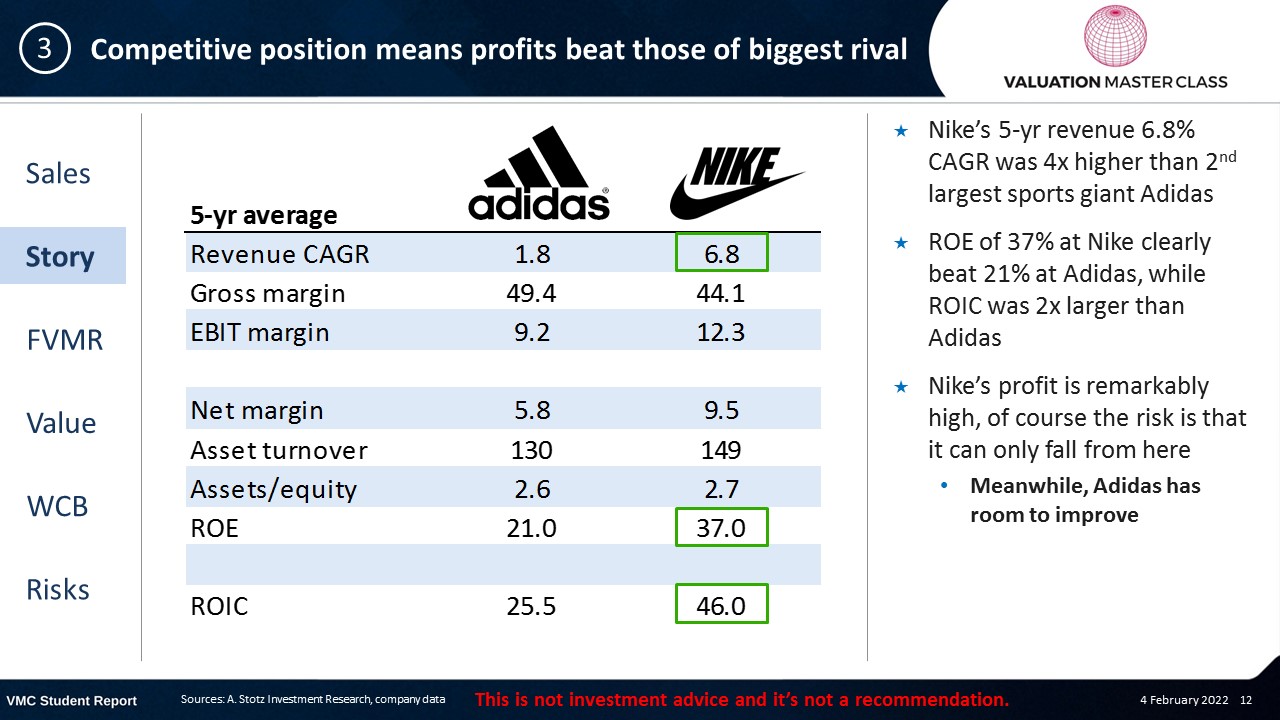
- Nike’s 5-yr revenue 6.8% CAGR was 4x higher than 2nd largest sports giant Adidas
- ROE of 37% at Nike clearly beat 21% at Adidas, while ROIC was 2x larger than Adidas
- Nike’s profit is remarkably high, of course the risk is that it can only fall from here
- Meanwhile, Adidas has room to improve
What is the role of cash in invested capital?
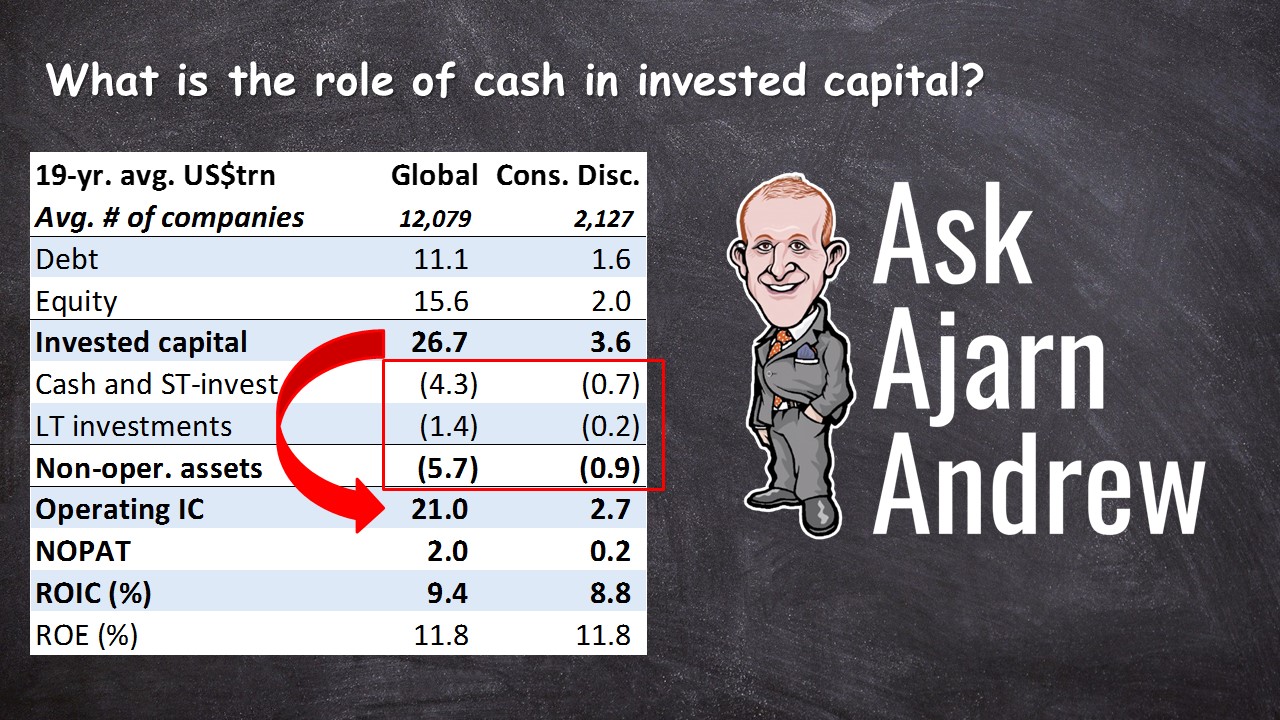
Massive value creation is already priced in
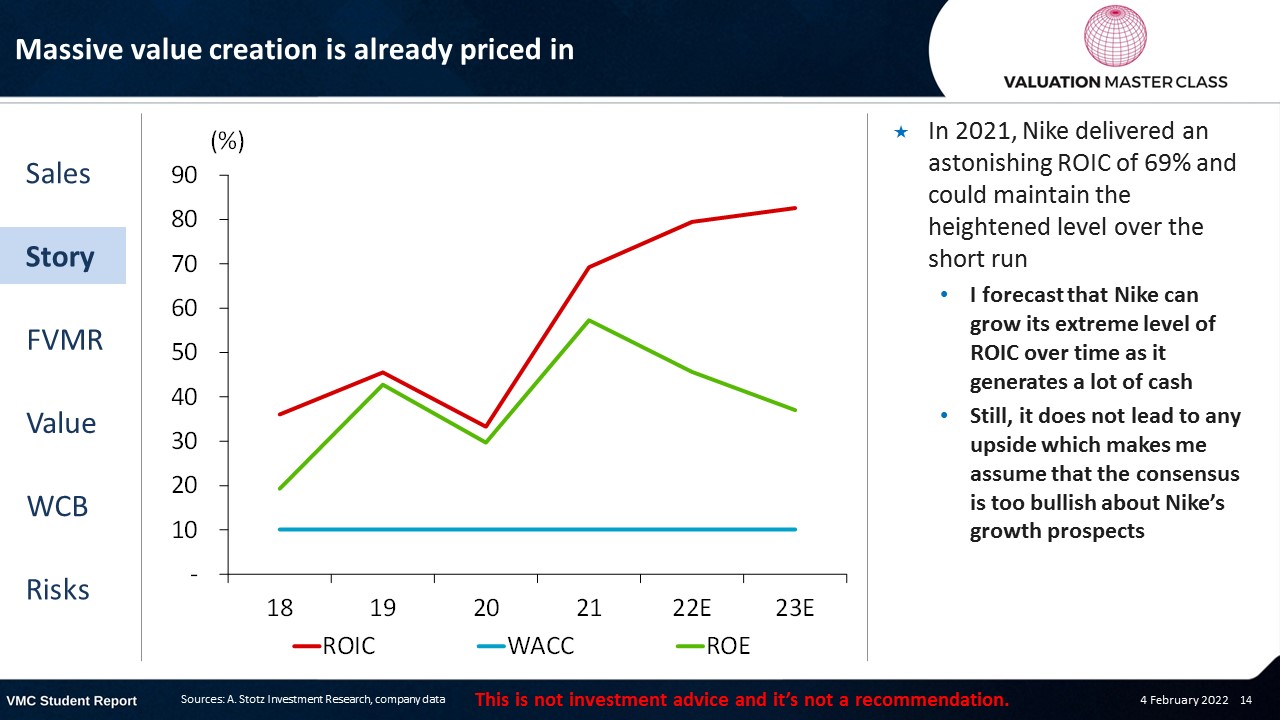
- In 2021, Nike delivered an astonishing ROIC of 69% and could maintain the heightened level over the short run
- I forecast that Nike can grow its extreme level of ROIC over time as it generates a lot of cash
- Still, it does not lead to any upside which makes me assume that the consensus is too bullish about Nike’s growth prospects
How I incorporated the story into my forecast
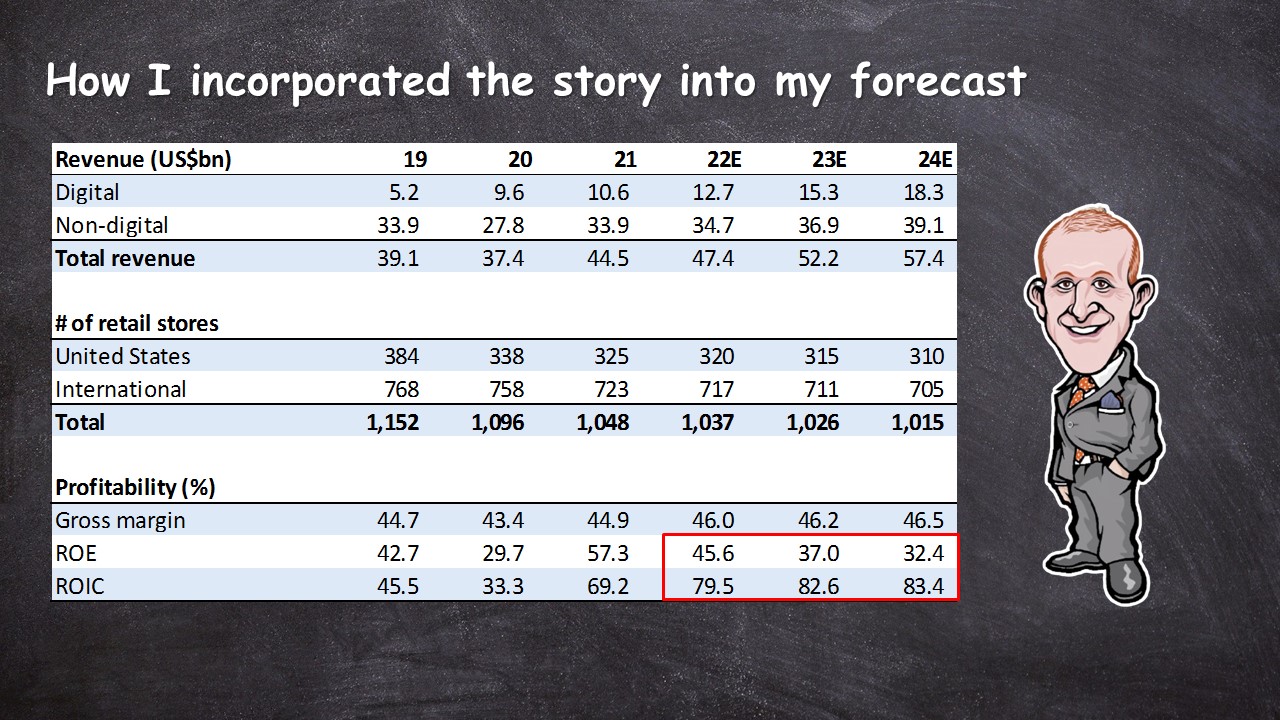
FVMR Scorecard – Nike
- A stock’s attractiveness relative to stocks in that country or region
- Attractiveness is based on four elements
- Fundamentals, Valuation, Momentum, and Risk (FVMR)
- Scale from 1 (Best) to 10 (Worst)
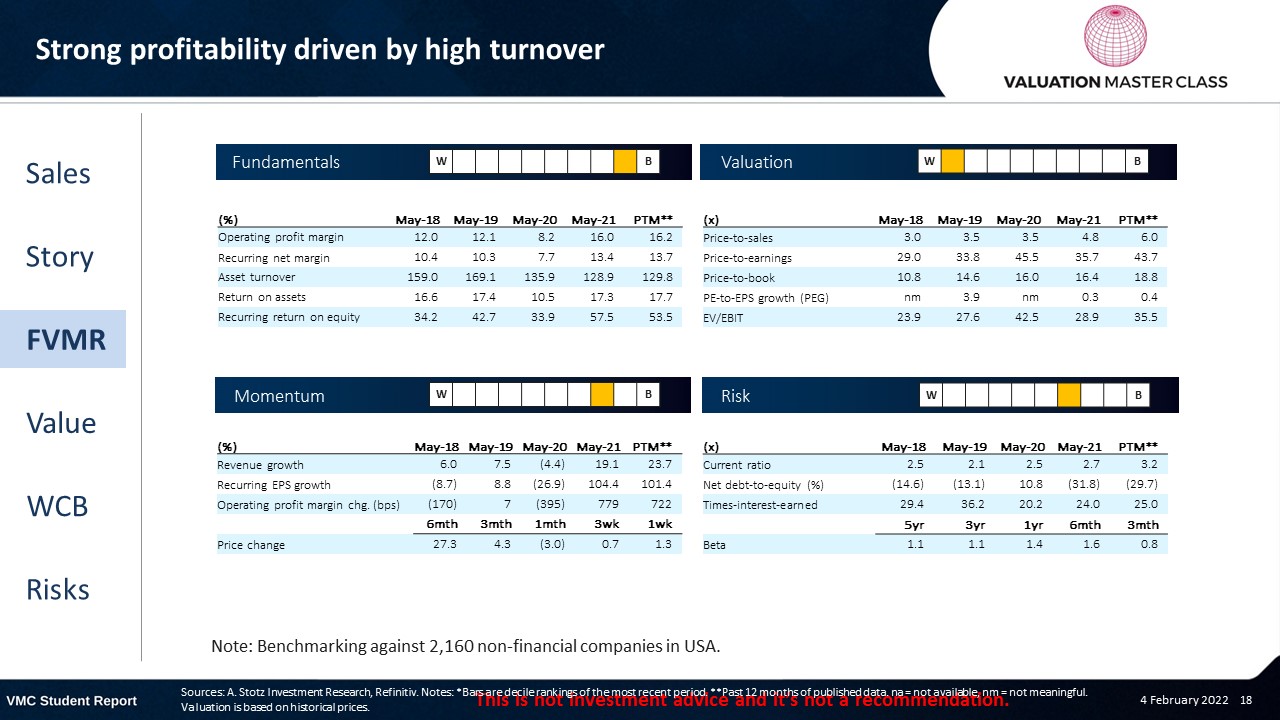
Consensus is strongly bullish
- Most analysts have a BUY recommendation, while 2 analysts issued a SELL
- Consensus is rewarding management’s efforts to focus on direct-to-customer sales
- They forecast a gross margin expansion of 3 ppts over the next 3 years, which might be a bit too optimistic
Get financial statements and assumptions in the full report
P&L – Nike
- Net profit is driven by both continued revenue growth and gross margin expansion
Balance sheet – Nike
- Defensive balance sheet with 1/3 of its assets in cash
- As CAPEX requirements are moderate, the company might decide to return part of its cash in form of share repurchases at some point in the future
- Balance sheet size is almost 2x bigger than its rival Adidas
Ratios – Nike
- Thanks to its margin expansion, Nike could see its EPS grow faster than its revenue
- Nike’s gross margin is below its competitor Adidas which averaged 49% over the past 5 years
Stock Picking Checklist: Can this company be a ten bagger?

Free cash flow – Nike
- CAPEX requirements are low, leading to high sustainable FCFF
Value estimate – Nike
- I expect lower revenue growth than consensus but higher net margin, leading to similar earnings forecast
- With a 4% terminal growth rate, I am already on the optimistic side
- Also, I assume the company to maintain its massive ROIC over time
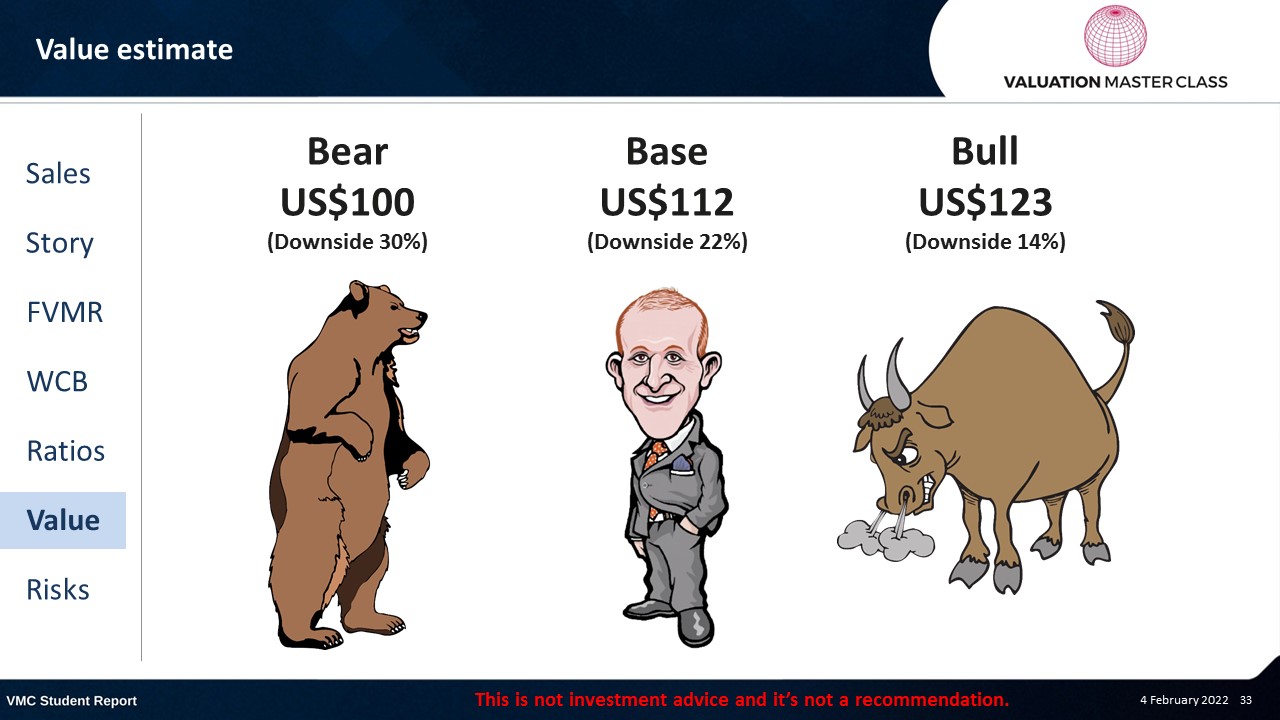
World Class Benchmarking Scorecard – Nike
- Identifies a company’s competitive position relative to global peers
- Combined, composite rank of profitability and growth, called “Profitable Growth”
- Scale from 1 (Best) to 10 (Worst)

Key risk is intense competition
- Entrance of new players joining the fitness and sports market with niche products
- Failure to meet local customer requirements, in particular emerging markets
- Consolidation of retail shops might impair ability to sell
Conclusions
- Direct-to-customer selling approach raises brand value and could enhance margin
- Early digital expansion gives it timing advantage over competitors
- Valuation is not cheap, bullish rally probably over
Download the full report as a PDF
Article by Andrew Stotz, Become a Better Investor.


